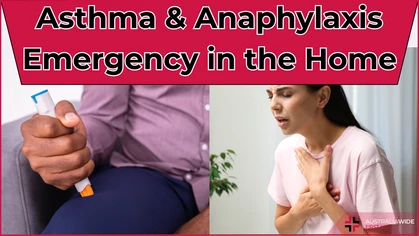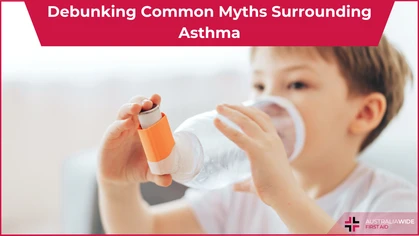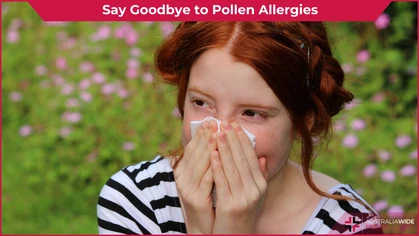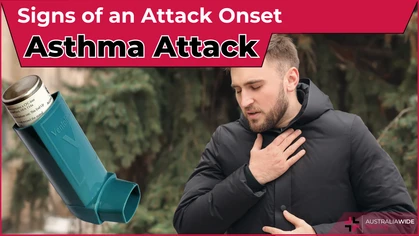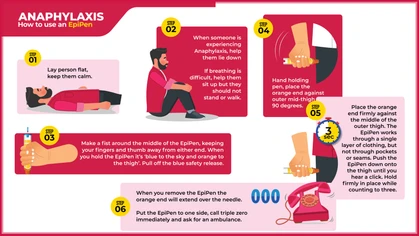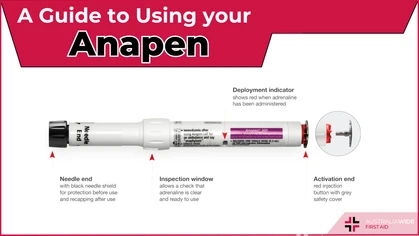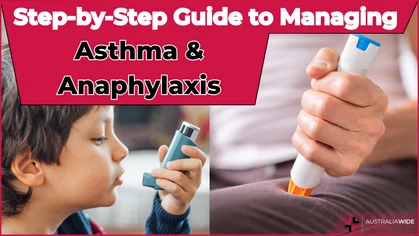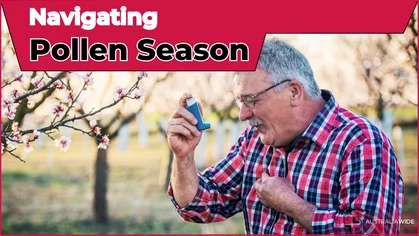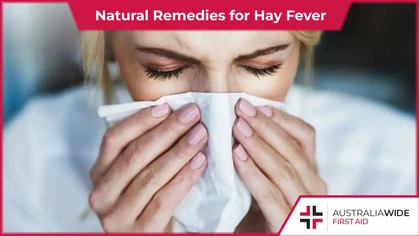The 'Paper Bag' Technique Won't Work for Asthma: Here's Why

Allergy and Asthma
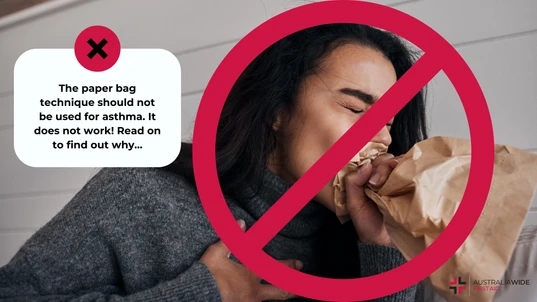
The paper bag technique is no substitute for asthma medication.
In this article, we’ll reveal why a paper bag technique is no replacement for an inhaler. We'll also look at how to provide first aid for an asthmatic when a puffer is not available.Asthma Attacks
Asthma is a respiratory condition that afflicts 2.7 million people in Australia — one in 9 of us (Australian Bureau of Statistics, 2018). The gravity of this hits home when this statistic is you, a family member, a friend, a co-worker, or a neighbour. And it’s a statistic that is not in decline. Most asthmatics know to always carry their puffer, their medication, and a copy of their asthma action plan. However, there is always going to be a time… Breathe in, breathe out, and read on for important tips about how to help when an asthma attack happens and not one of these 3 items are at hand.Signs and Symptoms of Asthma Attacks
During an asthma attack, the airways become constricted by tightened muscles and the inside lining of the airways becomes swollen and produces thick, sticky mucus. The most common and obvious signs of an asthma attack include:- Wheezing
- Shortness of breath
- Chest tightness
- Coughing fits
- Difficulty breathing
- Dry, irritating, persistent cough, particularly at night and early morning
- Gasping for breath having little or no wheeze due to lack of air movement
- Severe difficulties breathing
- Severe chest tightness
- Only able to speak a few words at a time
- Feeling distressed and anxious
- Blue discolouration on or around the lips (if skin colour also changes this can be hard to see)
- Pale and sweaty skin
- Sucking in of throat and rib muscles
- Using shoulder muscles or bracing with arms to help with breathing
- Symptoms rapidly getting worse or frequently using reliever more than every 2 hours
- Children may become restless, unable to to settle or become drowsy
- Children may also have trouble eating and drinking due to shortness of breath
- A child may have severe coughing or vomiting
What Happens During an Attack
There are 3 main things that can happen during an asthma attack. These are:- Inflammation: The inside of the airways become red and swollen
- Extra mucus: Your body may produce a sticky liquid that can build up in the airways and cause a blockage
- Bronchoconstriction: The muscles around your airways tighten, making it harder to breathe
These factors make it harder for air to pass through the airways and results in the symptoms mentioned above. If left untreated, asthma can be dangerous and may cause permanent damage to the airways.
What is the Paper Bag Technique?
The paper bag technique was once the recommended way to control hyperventilation. Hyperventilation is another word for over-breathing. Carbon dioxide is exhaled too quickly and too much oxygen enters the lungs, causing an imbalance of the two in the bloodstream. Breathing into a paper bag would increase carbon dioxide levels in the blood. These days though, your doctor could advise breathing techniques that help when you are hyperventilating. Medications can also be prescribed. Australia Wide First Aid does not recommend the use of the paper bag technique for any situation - advice from a medical professional should be sought for all breathing issues.
Using the correct medication is critical for proper management of asthma attacks.
Paper Bag for Asthma?
The asthmatic will cough, wheeze, and breathe in a laboured manner because their airways are inflamed and burdened by mucus. An inhaler allows the asthmatic to breathe in corticosteroids or cortisone-like medicines. When inhaled, the asthma medicines counteract inflammation in the airways, decrease mucus production, and relieve discomfort in the chest. The paper bag clearly offers none of that. If breathing — even a little — is a struggle, then it’s time initiate first aid for asthma.5 Preliminary Steps for Treating Asthma
First aid treatment provides relief to the victim of an asthma attack. In the absence of the victim’s puffer, medications, and asthma action plan, here are 6 steps you can take to initiate their recovery.- Help the person sit upright. Avoid bent over or prone positions as these would constrict their breathing even more.
- Guide the person to take long, deep breaths. Encourage them to inhale deeply through their nose and to exhale just as deeply from their mouth.
- Calm the person. Comfort them in a gentle manner and assure them they will get through this. Not only will this offer some emotional relief, staying calm will help prevent them further tightening their chest muscles, thereby making breathing easier.
- Distance them from potential triggers. Triggers for an asthma attack could include dust, pollen, cigarette smoke and animal dander. If such triggers are present, carefully move the victim to a cleaner, cooler room with better air circulation.
- Don’t hesitate to call for additional help if the previous 5 steps fail to provide relief and the person is unable to get their hands on their inhaler or medication. Immediately call Triple Zero (000) for help.
Be Prepared for an Asthma Emergency
Asthma emergencies can be frightening, confusing, and even life-threatening. Arm yourself with the knowledge of how to recognise and treat an asthma episode and asthma emergency with our fully-online Asthma First Aid course. Or if you need asthma knowledge and skills for your workplace, our Workplace Asthma Management and First Aid gives you the skills and knowledge to be able to develop an asthma risk assessment and emergency management strategy to handle asthma episodes in the workplace. If you want to go one step further, our Workplace Asthma and Anaphylaxis Management and First Aid course also includes what you need to know about allergies and anaphylaxis. All of our online courses can be completed at your work desk or in the comfort of your own home, with a Certificate of Completion to hand to your employer, put on your resume, or simply give you the peace of mind knowing that you can actually be helpful in an emergency situation.
Originally published at
https://www.australiawidefirstaid.com.au/resources/paper-bag-asthma
as part of the Australia Wide First Aid Articles Library
